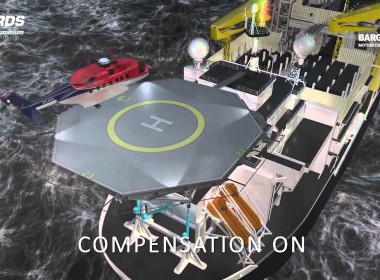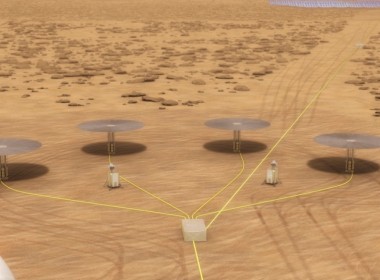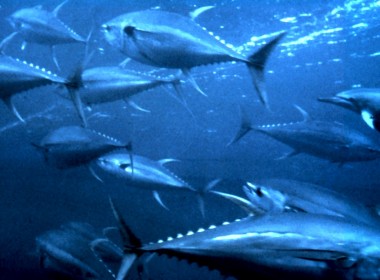COLUMN: A self-fu(el)filling prophecy? [The Bow Wave]
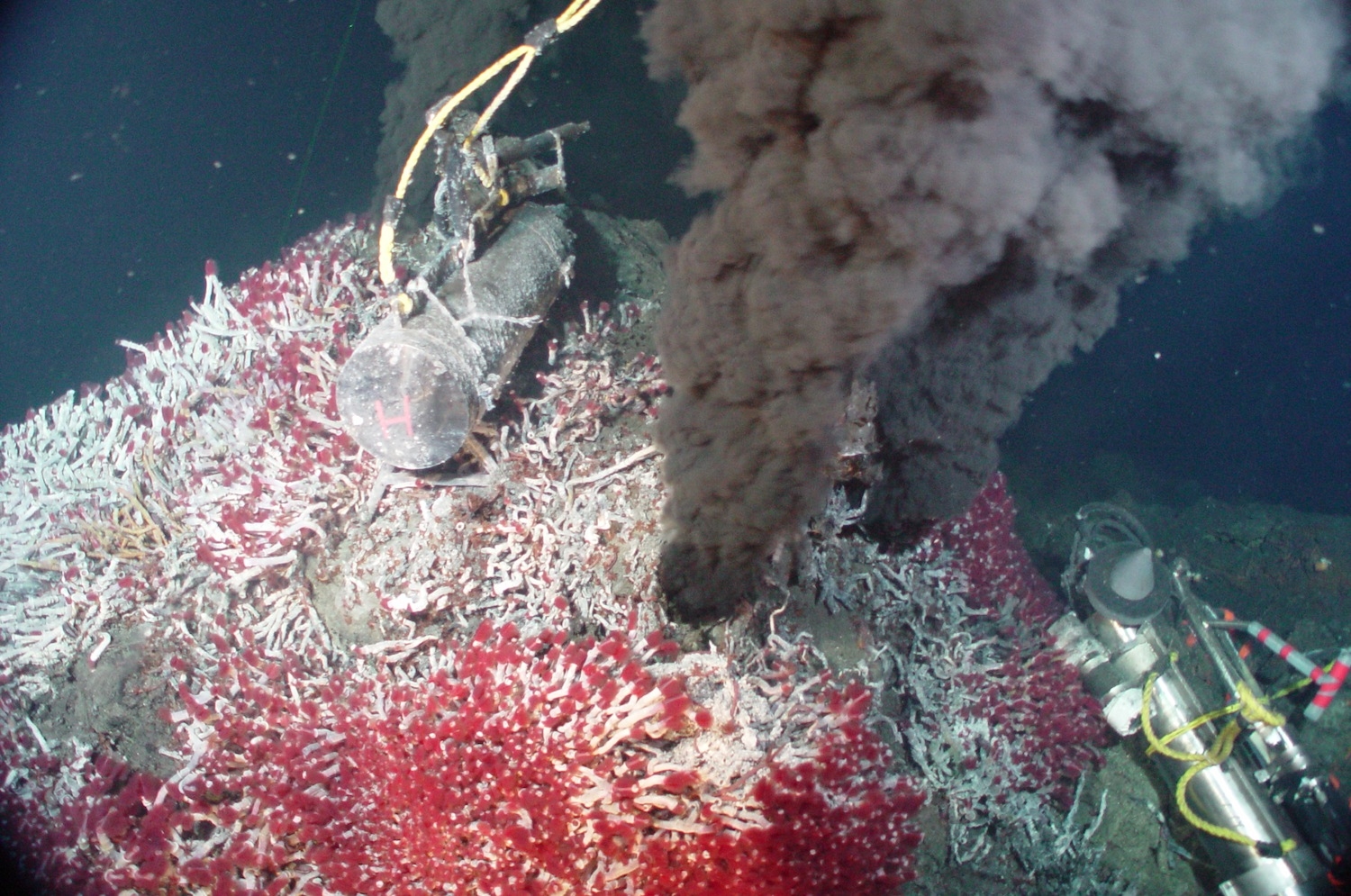
In my column in the August issue of this illustrious magazine I wrote about several of the promising ideas that had been presented at the Our Oceans Challenge in Rotterdam in June. This month I’d like to take one of the ideas that reached the finals, and propose a few modifications.
Offshore charge points was proposed by a pair of engineers who had the idea of placing large floating solar farms out at sea where passing electric ships could come alongside and top up their batteries.
The downside with this idea is that large oceangoing ships require significant amounts of energy to move about and battery packs will significantly eat into cargo capacity. Another issue is that batteries charge quite slowly, and having to moor a large cargo ship at night or in bad weather is going to be painful at the best of times, and having to undertake it multiple times per voyage is going to make like rather difficult.
So I thought, why not take the mid-ocean solar farms, and have them use the electricity to produce fuel in the form of methane or diesel. After doing some initial calculations into the energy requirements to produce even modest amounts of methane, I came to the conclusion that floating solar farms would have to be in the order of tens, if not hundreds of square kilometres in size to be meaningful. The cost to produce would never be justifiable so I started thinking about other sources of energy in the high seas.
Regular readers of this column will know that I have a bit of a ‘thing’ for hydrothermal vents, so naturally my mind gravitated in that direction, specifically to an idea that I’d come across quite a few years ago from a US company called Marshall Hydrothermal.
A future source of marine fuels
It has proposed an integrated system that will generate electricity, desalinate water and also mine the minerals in the hydrothermal fluids. Its system would utilise a floating platform with pipes down to the seafloor to carry hot fluids from the seafloor vents up, and cooled fluids back down. For this idea we are most interested in the electrical generation aspect, specifically their claim that a single platform could generate up to 20 gigawatts of power.
Now, knowing a bit about hydrothermal vents I’ve had a look at the assumptions the company used to arrive at that number and they are a bit optimistic. I’m not certain which datasets it was using, but I’ve certainly never seen flow rates or volumes that are as high as they claim are possible.
But let’s say we can achieve one gigawatt, or five per cent of the Marshall Hydrothermal projections, that’s still a significant amount of energy to play with. Lab-scale electrolysis works out to around 20 grams of hydrogen per kilowatt/hour with losses and so on, so that means we’re looking at around 20 tonnes of hydrogen per hour if we are to use all of the one gigawatt at our disposal. Since we have to run compressors for cryogenic storage of the end product as well as obtain the carbon from the atmosphere, let’s say we are only using half of the available energy, just 500MW. This gives us 10 tonnes of hydrogen per hour.
There is approximately 251kg of hydrogen in each tonne of methane, meaning that approximately 955 tonnes of methane can be produced from 240 tonnes of hydrogen produced each day. One metric tonne of LNG has a volume of 2.21m3 and a conventional LNG carrier can transport up to 145,000m3 (65,611 tonnes) whilst a Q-Max can take up to 260,000m3(117,647 tonnes). It would therefor take more than two months to produce enough methane to fill up one conventional LNG carrier. Alternatively, the Creole Spirit, a 295m LNG tanker equipped with a dual fuel engine from MAN is said to use 100 tonnes of LNG per day. Three days of operation is enough to fuel such a vessel for a month.
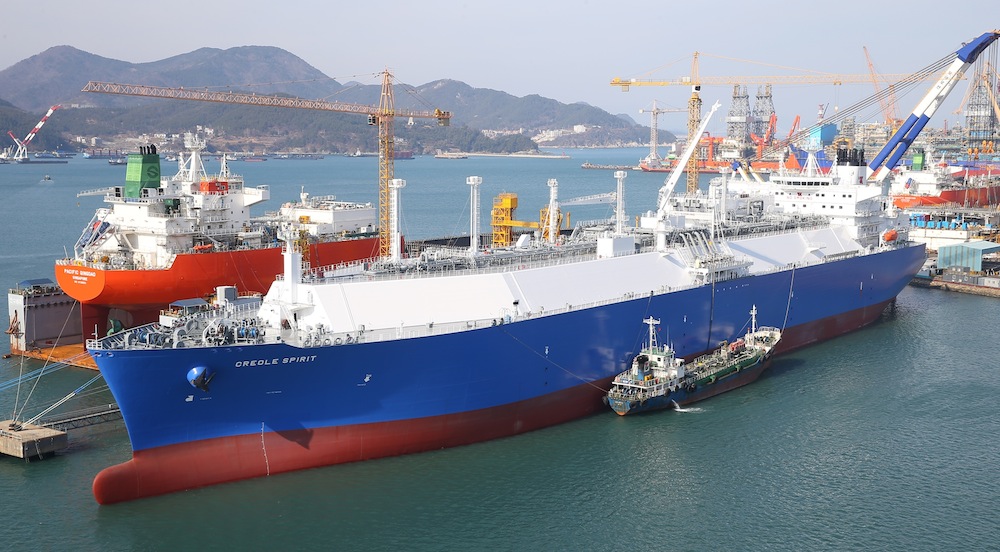
It turns out that I’m not the only person to have thought about synthesising fuels at sea. The US Naval Research Laboratory in 2010 commissioned an investigation into the feasibility of producing jet fuel at sea by extracting CO2 from seawater and processing it with hydrogen obtained from electrolysis (available here http://bit.ly/2wY7qMV). Jet fuel is virtually identical to kerosene and diesel, and requires only minor additives to make it work as a fuel in a diesel engine, alternatively in can be burned in a gas-turbine.
The investigation was asking what would be required to produce 100,000 gallons, or 378.5m3 in real units, of jet fuel per day. Producing jet fuel requires a few more steps than methane, but at the end it doesn’t require cryogenic chilling as jet fuel can be condensed just by using seawater as a coolant. And it turns out that the amount of electricity required to produce said amount of jet fuel is a little shy of 250MW, including the energy required to produce the hydrogen and CO2.
This means that if we were able to build a platform that can produce 1GW of power from the hydrothermal vents, we’d conceivably be capable of producing more than 1,500m3 of jet fuel each day. As with the methane example I gave before, you won’t be filling up a Panamax every other day, in fact once every two months approximately, but it’s an interesting idea nonetheless to produce a carbon-neutral, high-density energy source that is realistically going to be needed for weight conscious transportation like aircraft for decades to come.
If there are any chemical engineers that are reading this and are interested in running the numbers themselves I’d be very keen to hear about your findings. Feel free to contact me at [email protected]


